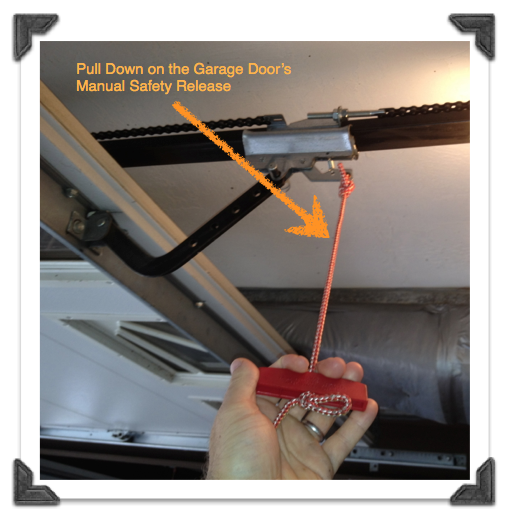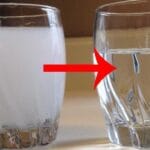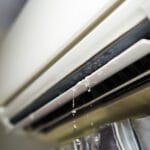To reattach a garage door cable, first, ensure the door is in the closed position and the tension is released. Then, reconnect the cable to the drum and adjust tension accordingly.
Garage doors are essential for the security and functionality of your home. A malfunctioning garage door can pose not only a security risk but also an inconvenience. One common issue homeowners face is a detached garage door cable. This problem can cause the door to operate unevenly or not at all.
Addressing this issue promptly is crucial to maintaining the integrity and safety of your garage door system. With the right tools and a bit of know-how, reattaching a garage door cable can be a straightforward DIY task. This guide aims to provide clear, concise instructions to help you get your garage door back in working order quickly and efficiently.
Introduction To Garage Door Cable Issues
Garage door cable malfunctions can leave your door inoperable, posing a safety risk. This guide demystifies the process of reattaching a garage door cable, ensuring you can tackle the task with confidence.
Garage door cables play a crucial role in the smooth operation of your garage door. These cables work in tandem with the garage door springs to lift and lower the door safely. Over time, cables may become frayed or even snap, leading to potential safety hazards and operational issues. Understanding the common signs of a cable problem can help you address issues quickly and maintain your garage door’s integrity.
Common Signs Of A Detached Cable
- Door hangs at an angle: Indicates cable has slipped or broken.
- Loud, unusual noises: Suggests a cable might be loose or damaged.
- Difficulty opening: Shows the cable cannot support the door’s weight.
- Loose cables: Visible signs of a cable issue.
Safety Precautions Before Starting Repairs
- Turn off power: Prevents accidental operation.
- Secure the door: Prevents it from moving during repairs.
- Wear safety gear: Protects eyes and hands.
- Release tension: Avoids injury from spring release.
Always prioritize safety before attempting any repairs on your garage door. By following these precautions, you can help prevent accidents and ensure a safer repair process.

Credit: ponderosagaragedoors.com
Tools And Materials Needed
Embarking on a DIY garage door repair requires the right tools and materials. Without them, reattaching a garage door cable can be daunting. Let’s explore the necessary items to ensure a smooth repair process.
List Of Essential Tools
Correct tools make the job easier and safer. Here’s what you’ll need:
- Wrench set: For tightening bolts and nuts
- Locking pliers: To keep parts in place
- Flathead screwdriver: To adjust components
- Wire cutters: For trimming the cable
- Work gloves: To protect your hands
- Safety glasses: To shield your eyes
- Ladder: To reach high places
Selecting The Right Replacement Cable
Choosing a quality cable is crucial. Here’s how to pick one:
- Measure your old cable’s length.
- Check the cable thickness.
- Match your garage door’s weight.
- Opt for weather-resistant material.
Always buy from reputable brands. This ensures durability and safety.
Preparing For The Repair
Before starting any repair, preparation is key. This is especially true when dealing with a garage door cable. A broken cable can cause your garage door to operate incorrectly, making it a safety hazard. Let’s prepare for the repair, ensuring a safe and effective fix.
Securing The Garage Door
First, make sure your garage door is secure. This prevents it from moving unexpectedly. Here’s how to secure your door:
- Close the garage door completely.
- Disconnect the garage door opener. This ensures the door won’t activate.
- Clamp locking pliers onto the roller track below one of the rollers. This will hold the door in place.
Assessing The Cable Damage
Next, examine the cable closely. Look for signs of wear or breakage. Identifying the exact issue is crucial. Use these steps:
- Inspect the cable from top to bottom.
- Note any frayed strands or corrosion.
- Determine if the cable is loose or has snapped.
With the door secure and the problem identified, you’re ready to proceed. The repair can now begin with confidence and safety in mind.
Releasing Tension From Springs
Before fixing a garage door cable, we must release spring tension. Releasing tension is crucial for safety. It allows for safe repairs.
Locking The Door In Place
- Start by closing the garage door fully.
- Use clamps to secure the door to the track. This prevents it from opening during repairs.
- Ensure the clamps are tight and the door doesn’t move.
Handling Torsion Springs Safely
Torsion springs are under high tension. They can be dangerous. Follow these steps for safety:
- Wear safety glasses and gloves.
- Locate the winding cone at the end of the spring.
- Use winding bars, not screwdrivers, to avoid injuries.
- Insert the bar into the cone and slowly unwind the spring.
- Keep your face away from the bars to prevent accidents.
Removing The Old Cable
Before fixing a garage door, we must remove the old cable. This step is crucial. Let’s start with how to safely remove the old cable.
Detaching The Cable From The Drum
To start, turn off the garage door opener. This makes it safe. Wear gloves to protect your hands. Next, open the garage door fully. This reduces tension, making it easier to work. Find the cable drum at the door’s corner. Loosen the screws that hold the cable. Do this gently to avoid any snap back. Finally, detach the cable from the drum.
Unwinding The Cable From The Pulley
After detaching, focus on the pulley. The pulley is a wheel that guides the cable. Hold the end of the cable firmly. Start unwinding the cable from the pulley. Do this slowly to prevent knots. Once fully unwound, the cable is free. You can now remove it completely.
- Turn off the garage door opener first.
- Wear gloves for safety.
- Open the garage door to ease tension.
- Loosen screws on the drum.
- Detach the cable from the drum.
- Unwind the cable from the pulley slowly.
- Remove the old cable completely.
These steps help ensure a safe removal of the old cable. Take your time and be careful.

Credit: www.garagedoorspokane.com
Attaching The New Cable
Attaching the new cable to your garage door is a critical step. This ensures smooth and safe door operation. Follow these steps for a quick and effective installation.
Threading The Cable Correctly
Correct cable threading is vital. It prevents snags and ensures proper function. Start by turning off the power to your garage door. This ensures safety.
- Locate the cable drum on your garage door.
- Find the slot on the drum designed for the cable end.
- Insert the tip of the new cable into this slot.
- Guide the cable around the drum in a neat coil.
- Keep tension on the cable to avoid overlap or kinks.
Threading must be precise. This ensures the door moves evenly and reduces wear.
Securing The Cable To The Drum
Secure the cable firmly to the drum to complete the setup. Use gloves to protect your hands.
- Make sure the garage door is closed.
- Lock the cable into place on the drum.
- Wrap the cable around the drum following the grooves.
- Use the set screws on the drum to fasten the cable.
- Tighten the screws with a wrench but do not over-tighten.
Double-check the cable tension. It should be tight with no slack. This step is essential for proper door balance.
Adjusting Garage Door Tension
Garage doors need regular maintenance for safe operation. Adjusting the tension is vital for a smooth-running door. Follow these steps for a DIY fix.
Balancing The Door Properly
Start by closing the door and disconnecting the opener. This is for safety. Use a ladder to reach the cable drum. Loosen the set screws on the drum with a wrench. Do this on both sides.
Next, pull the cable tight. The goal is to have no slack. Once tight, retighten the set screws. Repeat this on the other side. Ensure cables are of equal tension.
Testing The Door’s Movement
After adjusting, test the door manually. Lift the door halfway up and let go. The door should stay in place if balanced. If it falls or rises, adjust the tension again.
Check the door’s movement fully. It should roll up and down with ease. If not, release or increase tension. Use small adjustments. Test the door after each change.
Remember, safety first. Wear gloves and eye protection. If unsure, consult a professional. Regular maintenance keeps your garage door in top condition.
Final Safety Checks And Testing
After reattaching a garage door cable, safety checks and tests are crucial. This ensures the door operates smoothly and safely. Follow these steps to check and test your garage door.
Inspecting For Secure Fittings
Start by inspecting all fittings. Make sure each component is tight and secure. Look at brackets, screws, and the cable itself. Everything should be firm with no loose parts. Use a wrench to tighten any loose fittings you find.
Manual And Automatic Operation Tests
Test the door manually first. Lift the door halfway and let go. It should stay in place, indicating proper balance. For automatic operation, use the opener. The door should open and close with ease. Listen for unusual noises. Any strange sounds could mean more adjustments are needed.
Remember to check the auto-reverse feature. Place an object in the door’s path and close it. The door should reverse upon contact with the object. This feature is a critical safety measure. It prevents injury and damage.
Always disconnect the power before performing these tests. This prevents accidents and ensures your safety.
Maintenance Tips To Prevent Future Issues
Keeping your garage door in top shape is crucial. A well-maintained door runs smoothly. It also reduces the risk of accidents. Follow these maintenance tips to prevent future garage door cable issues.
Regular Lubrication Schedule
Lubrication is key to a noise-free, smooth-operating garage door. Apply lubricant to moving parts every six months. Use a silicone-based lubricant for best results. Focus on rollers, hinges, and cables. This simple step can extend your door’s life.
Routine Cable Inspection
Inspect cables regularly for signs of wear or damage. Look for fraying or rust. Check the tension. Loose cables can lead to serious problems. Tighten or replace them as needed. A monthly check can save you from unexpected issues.
By following these maintenance tips, you keep your garage door running smoothly. You also avoid costly repairs. Remember, safety comes first. Always disconnect the power before performing any maintenance.
When To Call A Professional
Fixing a garage door cable can sometimes go beyond a simple DIY project. There are moments when the expertise of a professional is invaluable. Knowing when to call in the experts can save time and ensure safety.
Identifying Complex Problems
Garage door systems can be intricate. If you notice the following, seek professional help:
- Broken springs
- Frayed or tangled cables
- Door off its tracks
- Unusual door movements
Benefits Of Professional Repair Services
Choosing a professional service offers advantages:
| Benefit | Description |
|---|---|
| Expertise | Technicians possess the required skills. |
| Tools | Professionals use the right tools for the job. |
| Safety | They follow safety protocols to prevent accidents. |
| Warranty | Most services come with a repair warranty. |
| Convenience | It saves you time and effort. |
Always weigh the risks before attempting repairs. Contact an expert for reliable and safe service.

Credit: www.wikihow.com
Frequently Asked Questions
Can A Homeowner Fix A Garage Door Cable?
Yes, with the right tools and safety precautions, a homeowner can fix a garage door cable by themselves.
What Tools Are Needed For Cable Reattachment?
Basic tools include locking pliers, a ladder, winding bars, and a wrench set for cable reattachment.
How Long Does Cable Reattachment Take?
Typically, garage door cable reattachment can be completed within 1-2 hours, depending on experience.
Is It Safe To Reattach A Garage Door Cable?
Reattaching a garage door cable can be safe if proper safety measures are followed, including securing the door and wearing protective gear.
What Are Common Mistakes In Cable Repair?
Common mistakes include not securing the garage door before starting, improperly winding the tension springs, and using the wrong cable size.
Conclusion
Reattaching a garage door cable can be straightforward with the right tools and steps. Remember, safety is paramount; always prioritize it over speed. If you’re ever unsure, professional help is worth the investment. Keep your garage door running smoothly, and tackle this DIY task with confidence.




